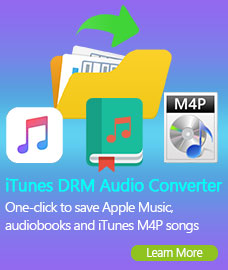Home > Glossary
Multimedia Glossary
- DVD, DVD5, DVD9, DVD-R, DVD+R, DVD-RW, etc.
- 3GP, ASF, AVI, MPEG, MOV, RM, WMV, DivX, XviD etc.
- AAC, M4A, M4P, OGG, MP3, ID3 Tag, WMA, WAV, etc.
- NTSC, PAL, ASX, Region, Codec, Streaming
DVD
DVD stands for Digital Versatile Disc.
DVD is essentially a bigger, faster CD that can hold cinema-like video, better-than-CD audio, and computer data.
DVD5
DVD-5 is a single sided single layer DVD that stores up to about 4.7 GB = 4 700 000 000 bytes and that is 4.38 computer GigaBytes where 1 kilobyte is 1024 bytes(4 700 000 000B/1024 = about 4 589 843KB/1024 = about 4485MB/1024 = about 4.38GB). Video DVD, DVD-R/W and DVD+R/W supports this format. Often referred to as "single sided, single layer".
DVD9
DVD-9 is a single sided dual layer DVD which can fit up to 8.5 GB or 7.95 computer GB which many commercial video DVDs are using today (a DVD-9 is basicly two pressed plastic DVD-5s pressed together, they are not burned). Video DVD supports this format but DVD-R/W and DVD+R/W does not support this format.
DVD-R
Short for DVD-Recordable, a recordable DVD format similar to CD-R. A DVD-R can only record data once and then the data becomes permanent on the disc. The disc can not be recorded onto a second time.
DVD+R
Short for DVD+Recordable, a recordable DVD format similar to CD-R. A DVD+R can only record data once and then the data becomes permanent on the disc. The disc can not be recorded onto a second time. DVD+R and DVD+RW formats are supported by Philips, Sony, Hewlett-Packard, Dell, Ricoh and others.
DVD-RW
Short for DVD-ReWritable, a re-recordable DVD format similar to CD-RW or DVD+RW. The data on a DVD-RW disc can be erased and recorded over numerous times without damaging the medium.
DVD±R DL
Also known as Dual Layer or Double Layer. It refers to a DVD recording technology that provides users with 8.5GB of recording space (as opposed to 4.7GB of space) on a standard DVD+R discs). The additional recording space is the direct result of dual layer technology.
DVD-RAM
A DVD format wherein DVD-RAM discs can be recorded and erased repeatedly but are only compatible with devices manufactured by the companies that support the DVD-RAM format. DVD-RAM discs are typically housed in cartridges.
VIDEO_TS
On a DVD disc, DVD movie files are stored in the VIDEO_TS folder. There is also an AUDIO_TS folder, this is where DVD-Audio would be stored, but usually the folder is empty.
AUDIO_TS
If you look at the files on a DVD, you will notice that most DVDs have both a VIDEO_TS and AUDIO_TS folder, but the AUDIO_TS folder is usually empty. DVD-Audio would be stored in an AUDIO_TS folder but is a separate format to DVD-Video.
VOB
VOB stands for DVD Video OBject.
The VOB file is one of the core files found on DVD-Video discs and contains multiplexed Dolby Digital audio (normally AC3 format) and MPEG-2 video. VOB files on a DVD are numbered as follows: vts_XX_y.vob where XX represents the title and Y the part of the title. There can be 99 titles and 10 parts, although vts_XX_0.vob does not contain any video, usually just menu or navigational information. You can find them on a DVD video disc in a subdirectory labelled VIDEO_TS.
IFO
IFO is a DVD information file that stores information about Chapters, Subtitles and Audio Tracks. Other DVD files include VOB and BUP files. IFO normally refers to a file on DVD-Video disc and stands for InFOrmation. While the main content of DVD-Video disc are the VOB files which contain the actual MPEG2 audio, video and subtitle streams, the IFO files provide information for DVD player where DVD-Video disc's chapters start, where certain audio racks are located, etc.
ISO
Besides the standards organization, this is a CD/DVD image format somewhat similar to a BIN/CUE image fileset, but the one single .ISO file contains both: the data and the CD/DVD layout information. These types of images can be burned with several CD /DVD burning programs.
CSS
CSS stands for Content Scrambling System.
In DVD-Video, an encryption scheme designed to protect copyrighted material that resides on a disc by periodically scrambling the data using encryption keys. A tool named Decss can allow users to circumvent it. Although Decss didn't exactly crack the CSS, but instead used leaked decryption keys.
Hot Products
PC & Mac Freeware





